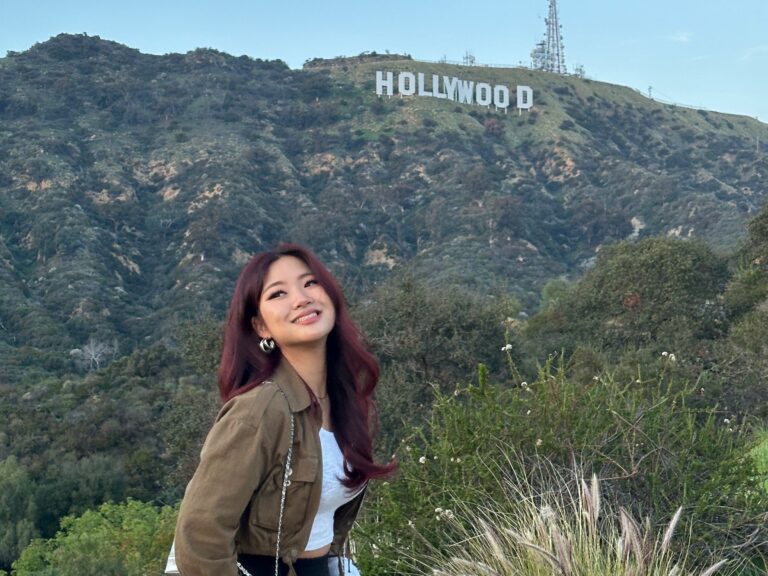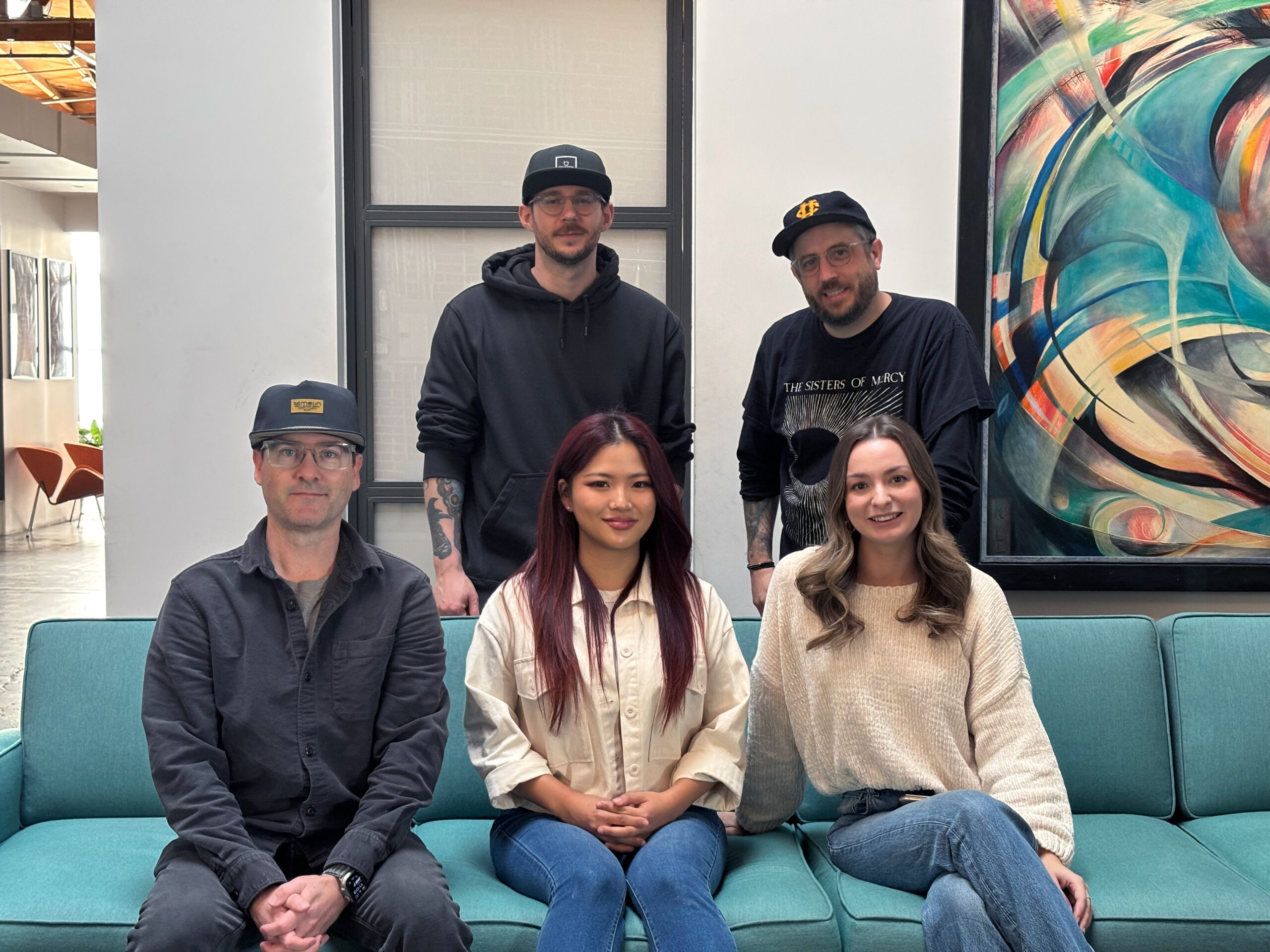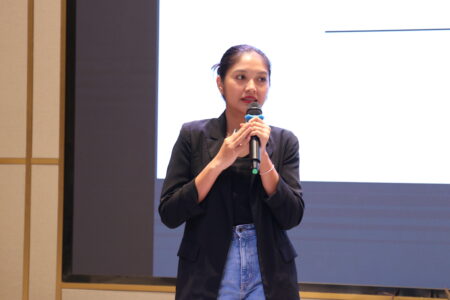
Search online and you won’t find any mention of visual art or motion graphic designer careers listed among skilled workers and in-demand jobs in the US.
The closest alternatives might be a motion picture projectionist or a marketing specialist, Prodigy Finance reports, but those roles are a far stretch from what designers do.
Why is this important, though?
US employers are often reluctant to sponsor work visas due to the complexities and costs involved. Between navigating legal procedures and justifying hiring foreign talent over domestic candidates, it’s simply too much seemingly unnecessary effort on their part.
Having to justify offering a visa to an employee in the visual art field? Highly unlikely.
However, one person defied all odds — Avalynn Kim.

Kim’s dad is a pilot, and her mum is a teacher. Due to their jobs, Kim has lived most of her life abroad in several countries. Source: Avalynn Kim
Born in South Korea but raised in the Philippines, New Zealand, China, and Canada, Kim didn’t expect she’d end up working as a motion graphic designer in the US.
Growing up, she never considered art her forte — it was her sister’s. But senior year changed her opinion, and soon enough, art became something Kim wanted to pursue at university.
In 2018, Kim joined Otis College of Art and Design’s BFA in Illustration in California, US.
However, attending a college in the US was not precisely what she had in mind. “My sister wanted to pursue an art degree in the US, but my mum did not want my sister to move there alone,” Kim shares. “So, I decided to tag along.”
Kim was introduced to motion design in the first year of her illustration programme. By the following year, she had built a keen interest in the topic and switched her degree to a BFA in Animation with an emphasis on Motion Design.

Kim is a graduate of Otis College of Art and Design. Source: Avalynn Kim
‘I could only get a sponsored OPT if my work wins an award’
The one thing that all students can relate to post-graduation is job hunting. International students, particularly, are vying for jobs with a visa sponsorship.
In the US, one way for international students to secure jobs on their student F-1 visa is by applying for Optional Practical Training (OPT). With this, students can work in their field of study for up to 12 months. STEM students, however, can extend their OPT for an additional 24 months.
This limited time is important for many — it is the chance to seize a job that can sponsor their future work visa once their OPT expires.
Kim’s opportunity came when she interviewed with Devastudios, Inc, a company that produces premium motion design and branding for film, television, and games.
“During the interview, I told them that I would like to get sponsored and that they were the company I was looking to work for and help me excel in my career,” says Kim.
“They got back to me and told me I have two options. They’ll have to apply for an H1-B visa, or I could win awards with my work and apply for an O-1B visa.”
An H1-B visa, one of the most common visas earned by international students, is a nonimmigrant classification for those who wish to perform services in a speciality occupation, services of exceptional merit and ability.
On the other hand, an O-1 nonimmigrant visa is for an individual with extraordinary abilities in the sciences, arts, education, business, or athletics. The O-1B visa is specifically for individuals with extraordinary skills in the arts or achievements in motion pictures or the TV industry.
By winning an award, Kim would be considered an individual with achievements in motion pictures, making her eligible for the visa.
Hearing that, the only thing that went through Kim’s mind was that this was an impossible mission. After all, she had only just graduated — how could she win any awards?
Nevertheless, she took up the job offer — all while still on OPT and without her next visa in sight.
View this post on Instagram
Seven months into her time with Devastudios, Kim was tasked with a marketing project for the 2023 box office hit “Barbie.”
Little did she know that this project would help her win an award and ultimately earn her an O-1B visa application.
The cherry on top? She even received recommendation letters for her visa application from Devastudios’s clients, such as big names in the industry like Netflix and Warner Brothers.
This, however, didn’t mean she received her visa the next day. In fact, with time dwindling to her final three months on her OPT, there was still no news on the horizon.
“I was highly anxious during those months,” Kim shares. “I felt at a loss and didn’t know what to do. I did not want to pack up and move back to Korea.”
It was in Kim’s final month on OPT that she finally received the good news: her O-1B visa application was approved. Now, all she needed to do was return to South Korea and sit for an interview at the American Embassy.
“It was a hectic three weeks back in South Korea,” Kim recalls. “I juggled work, sorting out my O-1B visa, and the timezone difference. But now, I have a visa that will allow me to work in the US for the next three years.”
“I’m extremely happy with the outcome, and I can focus on doing my best at Devastudios.”

Kim (middle) and her coworkers from Devastudios, Inc. Source: Avalynn Kim
What success looks like for a motion graphic designer
As a motion graphic designer at Devastudios, Kim gets to work on high-profile projects.
Take “Bridgerton,” for example. In the opening of season three, you’ll notice that the 3D stone-sculptured “N” in “Netflix” is covered in vine flowers with a bee playfully flying off the screen
That was the design of Kim.
Now, imagine hearing that Kim’s professional skills aren’t in 3D motion graphics.
“I only learned 2D motion graphics in college, and I had no idea how 3D motion graphics worked,” Kim admits. “I even told my company that and asked them, ‘Why would you want to hire me when I don’t meet the requirements?’”
The answer was simple — they saw potential in her.
From that moment on, Kim did everything she could to learn how to create 3D graphics.
That’s not to say that she never had to put effort into everything she did till she was hired. Kim knows she would have to work twice as hard as everyone else to keep her career in the US.
One way to do that? Continuously improving her skills and taking up freelance jobs wherever she can to strengthen her portfolio.
Even for work projects, she would go above and beyond, creating over 15 designs per project when what was required was much less than that.
@avalynnkim Replying to @naomi @Deva Studios This is a BTS of the squid games Netflix logo! No AI involved I will make make a video talking about my job and motion graphics soon! thank you for your comments! All work produced at Devastudios IG: @devastudios credit: Creative director: Suppasak Vibooklarp, Tyler Hicks Producer: Hailey Jarvis Design and Animation: Avalynn Kim #squidgames2 #squidgame #motiondesign #motiongraphics #netflix #devastudios #모션그래픽 #모션디자인 #모션디자이너 #motiondesigner #오징어게임 ♬ original sound – avalynnkim
Today, her hard work has paid off.
Kim has worked on WIRED’s motion logo, the “CyberPunk:Edgerunners” Season Two announcement teaser, and the “Thelma the Unicorn” end title scene.
Recently, she had the opportunity to work on the “Squid Game” Season Two opening ident logo.
Kim posted two reels on TikTok showcasing her work, gaining over eight million views in total.
“When I heard about Netflix coming to us for an opportunity to work on the “Squid Games” season two opening logo, I was super excited,” says Kim. “Being Korean and all, I wanted to win this project.”
Seven designers pitched their ideas, and Kim won out in the end.
“I received much support from my manager, and I’m happy with the outcome,” she says. “I hope that one day, my career success will lead me to work directly with Netflix.”










